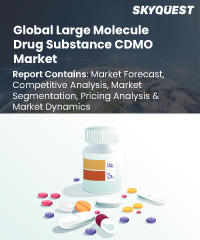
Report ID: SQMIG35I2127

Report ID:
SQMIG35I2127 |
Region:
Global |
Published Date: July, 2024
Pages:
278
|
Tables:
61 |
Figures:
75
In 2021, Asia Pacific accounted for approximately 35.0% of global revenue, and it is expected to grow at the fastest rate (CAGR) during the projection period. The primary drivers of the regional market growth are a big patient base, lower total costs, a competent workforce, and changes in the regulatory environment. The region is thought to be the most desirable for contract manufacturing. Large patient populations and the opportunity for highly qualified medical personnel exist in the Asia Pacific region. When compared to western nations, the cost of producing and conducting a clinical trial is remarkably inexpensive. Additionally, organizations like Wuxi Biologics and Boehringer Ingelheim are always looking for ways to expand their services in this region. For instance, Wuxi Biologics established a biologics-integrated innovation hub in Hangzhou, China's Zhejiang province, in November 2020. This center will offer a variety of services, including manufacturing and process development.
North America is expected to grow in the next years as a result of considerable R&D investments in the United States. The Pharmaceutical Research and Manufacturers of America, for instance, claimed in 2022 that American pharmaceutical companies spent $102.3 billion on R&D in 2021, of which 79.6 billion were spent domestically and 22.7 billion were spent abroad. The USFDA had authorized 39 biosimilar medications as of September 2022. The market is further fueled by the participation of a sizable number of players, including Catalent, Cambrex Corporation, LabCorp Drug Development, and Fujifilm Diosynth Biotechnologies. For instance, Catalent said in April 2022 that it will invest USD 350 million over several years to expand its facility's capacity to produce large molecule therapeutic products and pharmacological substances.
Our industry expert will work with you to provide you with customized data in a short amount of time.
REQUEST FREE CUSTOMIZATIONWant to customize this report? This report can be personalized according to your needs. Our analysts and industry experts will work directly with you to understand your requirements and provide you with customized data in a short amount of time. We offer $1000 worth of FREE customization at the time of purchase.

Report ID: SQMIG35I2127